|
Auch dieses Jahr gibt es wieder den allseits beliebten Kalender "Baltic Moments" für 2024 in A3. Ich habe wieder versucht so viele neue Bilder wie möglich zu nutzen und ein paar ganz besondere Momente sind mit dabei. Das Bild im Februar zeigt die Aurora Borealis wie sie durch den Gespensterwald in Nienhagen strahlt, ein wahrlich magisches Bild. Außerdem haben es die Rügender Kreidefelsen in die diesjährige Edition geschafft, sowie ein besonderes Bild der Rostocker Innenstadt mit einem Regenbogen am Ende der Kröpeliner Straße.
Bei Interesse meldet euch bei mir. Wie immer ist die Auflage limitiert auf 50 Stück. 2 0 E u ro + Versand innerhalb Deutschlands (oder Abholung in Rostock)
0 Comments
Schon lange wollte ich die Nordlichter (auch bekannt als Polarlichter, Aurora oder Aurora Borealis) an der norddeutschen Ostseeküste fotografieren. Berichte vorheriger Sichtungen zeigen, dass die Nordlichter auch bei uns gar nicht so selten zu sehen sind. Jedoch bedarf es für eine Sichtbarkeit in unseren Breiten eine erhöhte geomagnetische Aktivität. Diese Aktivität wird durch den Sonnenwind verursacht, der genau wie die Erde ein Magnetfeld gewisser Polarität trägt. Ist die Richtung des interplanetaren Magentfeldes (der sog. Bz-Wert) über einen längeren Zeitraum negativ (oder südlich) und dessen Stärke ebenso erhöht (Bt-Wert) dann steigt die Wahrscheinlichtkeit auch bei uns, um die Ecke die Aurora zu erleben. Ich habe einmal einen Ausschnitt der Parameter vom Freitag miteingefügt, diese Daten beziehe ich von www.spaceweatherlive.com. Entscheidend ist auch die Geschwindigkeit des Sonnenwindes und die Teilchendichte, bei einer noch höheren Geschwindigkeit als am Freitag wäre die Show sicherlich noch stärker gewesen..  Gegen 22 Uhr konnte man erste Strahler oberhalb des Bandes schwach visuell erkennen (oben links). Danach war zunächst nur das Band da (oben rechts), doch gegen 23.30 Uhr nahm die Aktivität zu und erste Strahler bewegten sich entlang des Bandes (unten links). Später dann viele Strahler und eine höhere visuelle Wahrnehmung (unten rechts). So nun genug der Theorie. Als ich diese vielversprechenden Parameter am Freitagabend sah, entschloss ich mich zum Naturstrand nach Torfbrücke zu fahren. Leider konnte ich dort zwischen 21.30 und 22.30 nur ein schwaches Band am Horizont erkennen, dass durch den fast vollen Mond auch sehr ausgewaschen war. Ich packte meine Sachen wieder ein, auch um mich aufzuwärmen und fuhr nach Markgrafenheide. Dort angekommen war das Band immer noch da, aber schon höher über dem Horizont, ein Zeichen, dass der geomagnetische Sturm stärker wird. Kurz danach waren dann erste Strahler oberhalb des Bandes zu erkennen. Und in der nächsten Stunde gab es immer mal wieder ein „Aufflammen“ der Aktivität, bis die Lichter dann gegen 00.30 Uhr ganz verschwanden. Zu diesem Zeitpunkt richtete sich das interplanetare Magnetfeld wieder in nördlicher Richtung aus und die Aurora war vorbei. Für alle die jetzt denken: „Wow, so etwas möchte ich auch sehen!“ Die Kamera sieht mehr als das Auge! Wenn es das nächste Mal so weit ist, erwartet bitte nicht, dass ihr grüne Lichter am Horizont seht, vielmehr wird es ein weißliches Leuchten sein, wobei man meist ein intensiveres Band oberhalb der Horizontlinie hat und dann wenn sogenannte „Substürme“ einsetzen tanzen meist einzelne Strahler oberhalb dieses Bandes. Bei starker Aktivität soll man auch das Rot erkennen können, aber das weiß ich nur aus Erzählungen. Also gebt die Hoffnung nicht auf, auch hier in Rostock kann man, wenn alles stimmt Polarlichter sehen. Checkt die Daten regelmäßig, vertraut keiner Vorhersage, sondern macht euch selbst ein Bild. Habe hier noch zwei Links zu hilfreichen Seiten angefügt:
https://kachelmannwetter.com/de/aurora https://www.swpc.noaa.gov/products/aurora-30-minute-forecast Vielen Dank auch noch an den Nordkurier für einen tollen Artikel zu meiner Nordlicht-Sichtung! My family and I spent the last week in New England to visit friends in Boston. Of course I was very happy to be there around peak foliage. New England is known to be one of the best places on the planet to marvel at fall colors. After arriving on Friday via Iceland we had to conquer a rainy day on Saturday (as Boston was hammered by an ex-Hurricane). On Sunday we drove out to New Hampshire going biking at Highland Mountainbike Park, an all time favorite of mine. I took my camera and was getting some cool shots from the lift. Boston was the first ever city I visited in the USA back in 2011 and coming back here always feels great. This year was even cooler, as we got to see the Parade of the Red Sox after wining the MLB world series and showing our little one around. I found time to explore the shores of the Charles River of Cambridge looking over to Back Bay Boston, once in the late afternoon, with the sun from the west (or the right here in the image) and another time the next morning. I always liked the MIT sailing boat dock back in 2011, but never was into photography that much back then, so this time I am happy with what I got. Venturing further towards the Long Fellow Bridge I got a clean shot of four boats on a swimming board walk as a foreground. I was happy to see that the shot was sharp as the traffic on the Charles at 6.45 am in the morning is insane with rowing teams practicing. Before taking the T back to our friends home I got two moody shots on the Long Fellow Bridge and I was quite happy with what I got. Hope you like this little post!
Have a great week everyone. On July 27th 2018 the Moon passed through the center of Earth's shadow, which resulted in the first central lunar eclipse since 2011. This alone would have been amazing, but to top things off, it was and will be the longest total lunar eclipse of the 21st century with 1hrs 43 minutes of totality. This was due to the fact that the moon was almost at its maximum distance from earth and therefore remained in the earth shadow for a longer period of time. During totality the Moon appears to be reddish (also called the Blood Moon) because of Rayleigh scattering, which is the the same effect that causes sunsets/rises to appear reddish and the daytime sky to appear blue. In Rostock the moon rise was scheduled to be 9.30 pm, and the moon would already rise in the state of totality. So planning what I wanted to shoot I opted to get the different phases of the lunar eclipse a s a composite image over the city of Rostock. But as seen in the first image here, huge storm clouds over Brandenburg obscured the first 40 minutes of totality, but at 10.10 pm the moon would eventually show behind the clouds and align perfectly with the Petri-Church, one of the shots I had envisioned (see below). Now the waiting game began: I wanted to capture a sequence of the different stages of the lunar eclipse, which meant to shoot one image every 5 minutes over a period of 3 hours. I had locked down my composition using my Nikon D800e with a Nikkor 24-120 F4 AF-S VR lens set to 28 mm, this would allow me to keep everything in the frame. I started my stopwatch and would shoot one image every 5 minutes. The good thing in such scenes, you can use one of the twilight scenes as your base exposure, giving you considerably less noise. After that I would play with the exposure triangle to perfectly expose the moon. After all was said and done it was 1.15 am in the morning, the moon was bright again and I had captured the material I needed to finish my project. In photoshop I brought together the different moons and the base exposure, giving a final result that I am pretty happy with!! Having a second camera handy, helped me to get more images of the eclipse and some unique perspectives of Rostocks inner city harbour during the lunar eclipse. I assembled some in the galleries below.
And also if you would like a print of the images seen here, just use the contact form on this website. Am Ostersonntag wurde unsere Region von einem ungewöhnlich späten Schneesturm heimgesucht, dabei vielen bis zu 60cm sehr nasser Schnee. Diese sehr nasse, schwere Schnee führte zu immensen Schäden im Wildpark Güstrow, wo viele Freigehege der Tiere und Vogel-Volieren beschädigt wurden und der Park alleine nicht für die Kosten aufkommen kann. Ich möchte die Gelegenheit daher nutzen, zwei meiner Bilder zu versteigern und die Erlöse dem Tierpark zukommen zu lassen. Die Auktion läuft wie folgt ab: 1. Sie haben Interesse, dann schicken Sie mir eine E-Mail mit Ihrem Höchstgebot! 2. Dafür haben Sie bis zum 30.04.2018 Zeit. 3. Der Höchstbietende erhält das Bild. 4. Das Bild erhalten Sie erst, wenn Ihre Spende auf dem Konto des Wildparks eingegangen, diese werden mich darüber informieren. So und nun zu den Bildern. Bild Nr. 1 zeigt das Güstrower Schloss am Abend des Karfreitags bei einem wundervoll farbenfrohen Sonnenuntergang, die Wolken im Bild kündigen die aufziehende Schneefront an. 90 x 60 cm auf Leinwand. Wert: 190€ Mindestgebot: 200€ Bild Nr. 2 zeigt die Speicherstadt Rostock's an einem ruhigen Abend Anfang Februar diesen Jahres im Zwielicht des Tages. 90 x 60 cm auf Leinwand. Wert: 190€. Mindestgebot: 200€. So once again for my English-speaking followers: On the Easter-Weekend our region got hit by a massive late winter storm. The heavy, wet snow was causing massive damages in my hometowns zoo, the Wildpark Güstrow. The park does not have the money to repair the damages on their own. I will be auctioning off these two images here and the winner will receive a canvas print of these images after donating the winning amount to the zoo.
1. The minimum prices for both are 200€. 2. Send me your your highest bid until April 30th. 3. The highest bid will receive the image. 4. Transfer the winning amount to the account of the Wildpark-Güstrow and then you will receive the image. Thanks for your support. So this year I have the plan to get out to the Baltic Sea every month to document the changes on the shore line. The constant winds, ice, snow, harsh sun, breaking waves all work together to create and take land every minute. It is amazing to see the drift wood coming on shore after a strong storm or the coast line retreating after days with high surfs. At the end of the year I seek to have created a story that details the constant change and the unique moments that come with it.The winter was quite mild this year, but I have some early results showing what a mild and briefly cold winter can look like.here in Rostock. Stay tuned for the end of the year. #StoryTelling  Frozen in time. Temperatures dropped below -10C here in Rostock for a week or so, which was the first time since we came back from Canada. This has resulted in the River Warnow freezing in only two days. Pictured here is the night time view from Gehlsdorf over to Rostock on a moonlit night, with one wooden pole fighting off the ice! I recently attended a conference in Linz, Austria and to get there flying into Munich was the best option. In Munich I met with friends I had made during our time in Edmonton and after discussing some business we were off to chase some beautiful scenes just an hour south of Munich. Starting in Schlehdorf at the beautiful Kochelsee, we attempted to shoot sunrise, however, on that morning the sun never came up leaving us standing in grayish dull light. But we still had a great scenery unfolding with the famous three boat houses and some amazing foreground structures, but see for yourself.
From there we headed to the Schliersee area, where a 12m high waterfall was waiting. Getting there was painful in the morning rush hour on only highways, but after 1.5 hrs we arrived and had only 10 min to walk up the falls. It was snowing, which made it really difficult to keep the lens free of water, but the snow also helped to reveal the face of Josefthaler Waterfalls. But look for yourself. After that I greeted my friend Marc goodbye and headed towards Salzburg in Austria, where I quickly stopped at the famous Gollinger Waterfalls near Kremml. The path to the falls was slippery but the scenes there amazing, with lush greens , turquoise water and a tamed waterfall due to the low water levels in winter. I called it a day after that and headed to Linz and made to my conference well in time. Here are some of my favorite shots from that morning! Enjoy.
2017 was a year of endings and new beginnings. On the last day of January we left Canada after two incredible years to move back to our hometown Rostock in Northern Germany, where had the chance to take on an academic position. It was tough to begin with, as we had just settled in in Edmonton and we were leaving behind new friends and of course the beautiful Albertan nature. But the new beginnings not only brought more and more work and the excitement of setting up my own research program, it also came with exploring our home with the camera. Before we lived in Canada I was only doing sports photography and aside from the holiday snapshot, landscape photography never really was something for me. That changed after being the aurora the first time, thats what got it all started. So coming back home with a new vision was special. we live directly on the Baltic Sea and that was my main objective. Throw in a trip to Mallorca and the Dolomites and I had quite a good photographic year.
So in the following see my personal seven favorites and the story behind them!
No 1. Easily my shot of the year. This the lighthouse at Cap Formentor on Majorca, Spain. This is the North Eastern tip of the island and I really wasn't expecting the Milky Way to arch perfectly over the light house that night. I was there all alone. Playing with angles a bit I soon found that from my viewpoint I could use the stairs as a leading line. Add in the strong airglow (or aurora, as this was May 28th) and you have the perfect shot. Panorama from 10 vertical frames shot at 20mm.
No 2. Well this one was a great way to say goodbye to Lady Aurora, we were granted a superb show starting somewhere over the Hudson Bay and lasting all the way to descending into Iceland. This here was taken over Labrador and I was blown away that this is looking south as you can see Orion in the shot. Haven't seen the Lady ever since (we are to far south magnetically in Germany here).
No 3. A last big road trip in the Canadian Rockies in January when I went with four friends and met others at Abraham Lake to shoot sunrise. We opted for Preachers point and I particularly liked this huge stack of bubbles, which was hard to expose in the twilight of the morning. Had to focus-stack to get it all sharp and was happy that the last stars were still shining through the break of dawn. Just fell in love with the blue hour this year as you will see.
No 4. The coastline around Rostock is subject to strong erosion and coast protection is achieved for example through these lines of wooden poles (called Buhnen). On a stormy summer night I luckily opted to go east of the City where the clouds eventually broke and created dramatic light. Got quite some shots of the Buhnen but this one is my favorite of the year.
No 5. Venus rising over the Odle Group short before dawn as seen from the Seceda-2500 lift station, one of the most popular spots in the Italian Dolomites. We had hiked up here under the light of the 50% waning moon gaining 700m in hight. The conditions were very wintry, which we did not expect. But we still made it and short before the top I saw Venus and immediately wanted to use this in the comp. Opting for f4 I was also able to get a Venus-Star if you look closely. Also loved how dawn was breaking in the east and how the moonlight casted the scenery in dreamy light.
No 6. Looking in the other direction at Cap Formentor 200m high sea cliffs drop vertically into the Mediterranean Sea and I found it hard to believe that plants grow on these bare rocks. This comp really kept me thinking that even in the most miserable surroundings nature finds a way to adapt and evolve into something bigger.
No 7. When I first met one of my favorite photographers Paul Zizka he was standing waist deep in Lake Minnewanka, getting an under-over shot of the aurora. Well having so much water around in Rostock I now know that being in the water is recommended to get the one special shot. This here was on the island of Rügen, with is chalk coast that belongs to the Unesco World Heritage. I know there was a line of wooden poles in the water, but the tide was a bit high and it only briefly got exposed. So I took roughly 100 shots until I eventually got the perfect water motion and the poles were uncovered, while the chalk cliffs were glowing in the morning sun.
This week I eventually had the time to pursue sunrises in Rostock and it was well worth it. On Wednesday I looked out the window and saw some hints of color in the southeast. I quickly checked the satellite image and saw that the cloud edge was indeed ca. 100km southeast of Rostock, which would give amazing colors with medium high clouds. I decided to head towards Gehlsdorf to get a view of the city skyline. Arriving on the Warnow shore I was happy to see the first hints of red over the skyline. However, the wind was blowing and destroying any reflection that could have helped with the composition. Instead I decided to go with just the skyline and the vibrant sky. Also I used some wooden poles and a long exposure to create some interesting compositions. Here are my favorites from this morning. Today I was again seeing some hints of breaks in the clouds and considering that I had some time before heading to work, I decided to head to Warnemünde at the Baltic Sea. One subject that I hadn't had the chance to shot in good photographic conditions yet were the iconic lighthouses. Arriving at the scene I was happy to see waves of 1m rolling in and breaking on the rocks of the pier that the lighthouse is built on. I opted for some long exposures, as well as exposures between 1/4 and 1 second, as theses exposures help to retain structure in the water and create very dynamic sceneries. I also looked into the other direction towards the famous hotel Neptun and here I was waiting for a wave to break directly in front of me to create the splash I wanted, after 60 images I had what I wanted. And in that moment a hint of color was also showing in the sky.
If you only have limited time to explore you need to have a great plan to maximize the number of spots and photography opportunities you get on a given trip. This September I was happy to find the time to go the Alps for six days. There were two areas I badly wanted to visit to get my mountain fix: The Italian Dolomites and the Alpstein Region in northern Switzerland. So on September 12th I flew from Rostock to Munich, picked up my rental car at the airport, which turned out to be a Ford Galaxy, which helped my case to sleep in the car. After some grocery shopping in Erding (yes, the city with the Weissbier) I eventually left Munich at 8 pm. Two hours later than I had hoped for, so on day one sunset was cancelled. I quickly gained kilometers and headed directly to Ortisei in the Dolomites in Val Gardena. There I was meeting with Toby (SNP-Photography) and Peer (p1xoneDesigns), two photographers I knew from facebook who were both in the area at the same time. We met at the pass road to Passo Gardena (Grödener Joch) to shoot the Milky Way over the Langkofel (or Saslonch, or Sassolungo). I found this spot using combination of Photopills, TPE and GoggleMaps, and looking at the images it was a great find. However, I was late to the show and the moon had already risen. Combine that with a fresh snowfall and conditions were almost too bright to photograph the Milky Way, also at midnight, the core of the Milky Way had already set. But I still like what I got at the first spot.
Next up was a hike to the top of Seceda-2500 to shoot sunrise (note that sleep was not part of that night). We quickly drove to Santa Christina, from where it would take 6.5 km to reach the Seceda-Ridgeline. Last minute we had decided to start from there and in the aftermath we believe it was good call. After some snacks and putting on some extra layers we left in bright moon light at 2.30am. We quickly gained way and came out of the forest after 3.2 km just to see that we still had ways to go and that snow might actually become a problem. Well it was, with each meter in height we gained a centimeter of snow (literary). The path was frozen over and I only had running shoes on. But fighting through steep icy patches on the path and cutting through knee-deep pockets of snow we eventually reached the top after 3 grueling hours of ascent. On the top I was noticing that venus was aligning perfectly with the Odle Group and I quickly set up to get that in. After that it all looked like the sunrise would be rather boring as it was a clear night. But ugh clouds were making their way in from the east and so we got some epic pre-sunrise burn over Seceda and some amazing Alpenglow on the east-facing Langkofel. The last shot we wanted to get was a sunstar behind the Odle Group and on that day the lack of clouds played in our favor. At 7.13 am the sun was bursting behind the peaks and I got an amazing sunstar using my Nikkor 20/1.8 AF-S (nikons best lens for that purpose). In the following you see a collection of the best shots from that sunrise-hike.
Standing up on the Ridgeline in the wind for 3 hrs we were frozen to the bones and slowly made our way back to the parking lot. On the way I found some cool compositions, but I was getting too tired to really go for it. We reached the car at 10.30am quickly ate a bit and then slept for 4 hours, just to be faced with the decision where to head for sunset. After a brief discussion with Toby and Peer we decided to camp at a camping lot near the Seiser Alm (Alpe di Siusi) which would give us a good starting point to shoot sunrise the next morning and also a the Lago di Carezzi would be in reach for sunset. After a shower and quick refresh we left the campground at 5.45pm and made our way up a very narrow winding road towards the Karersee (Lago di Carezzi) passing the Rosengarten Group, which was an impressive sight. We reached the lake well before sunset and that place was packed with people. The shores were fenced and we didn't dare to step over the brigades with so many people around (not spoiling everybody's shots). When we arrived the skies were clear with a little cloud in the west. But that should change quickly. Clouds started to engulf the Later Group, which reflected perfectly in the emerald-green water of the lake and when the sun eventually set nothing of the breathtaking mountain scenery was visible, but as a consolidation price, the clouds were shining in cool red tones and we still got some breathtaking shots. After that we waited a little longer, just to see that the skies were not clearing and left knowing that we had some unfinished business here.
to be continued |
ChristianRead about the stories behind the pictures. Archive
January 2022
Kategorien |
© COPYRIGHT 2017. ALL RIGHTS RESERVED.





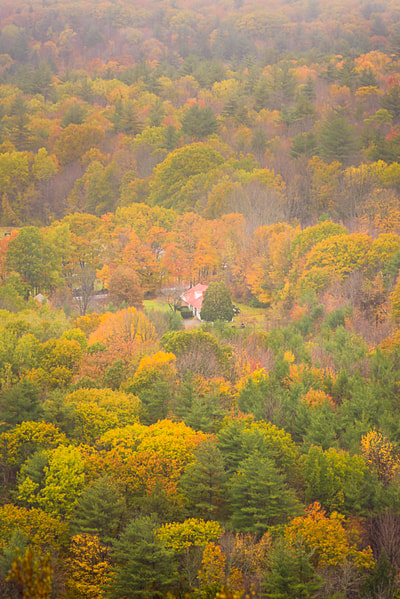










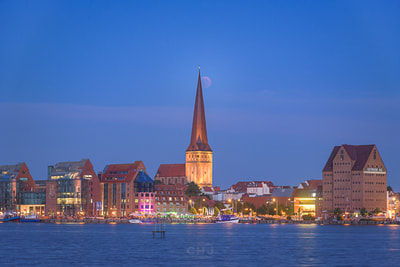


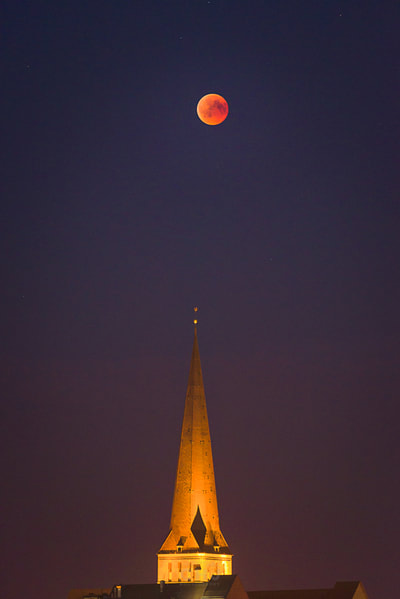








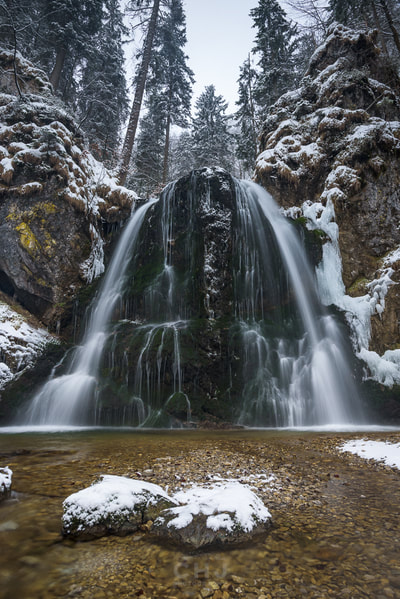


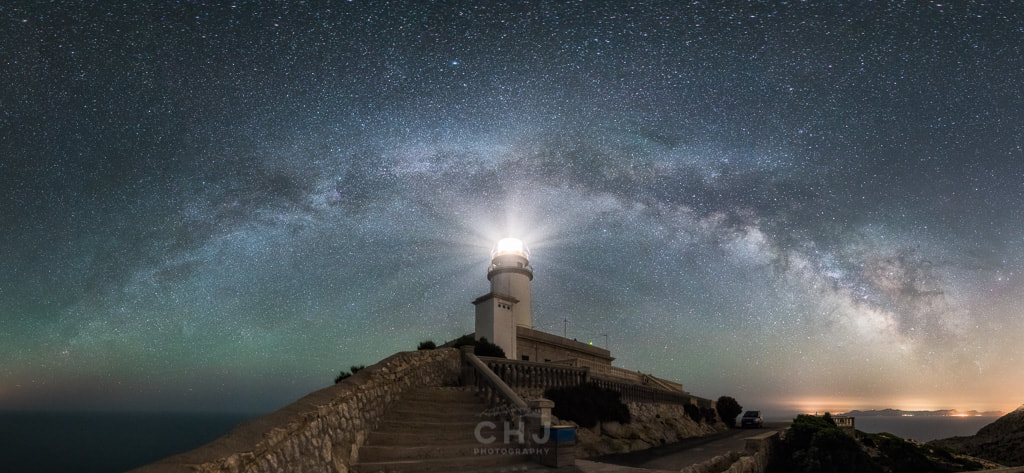










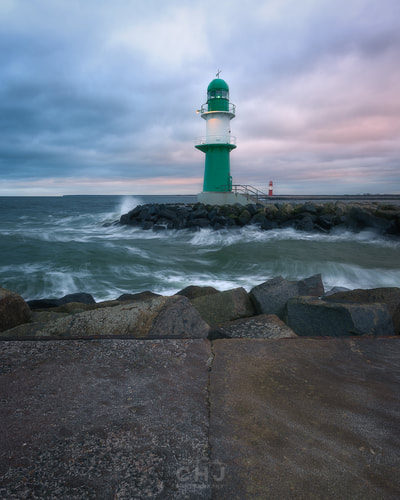







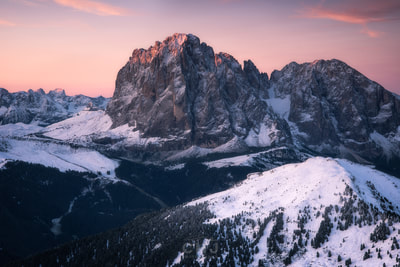


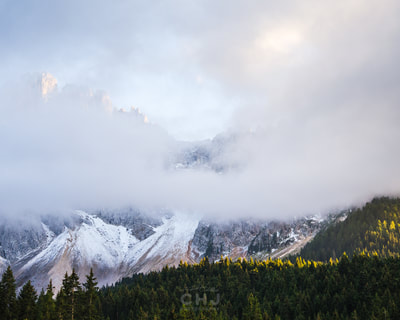



 RSS Feed
RSS Feed